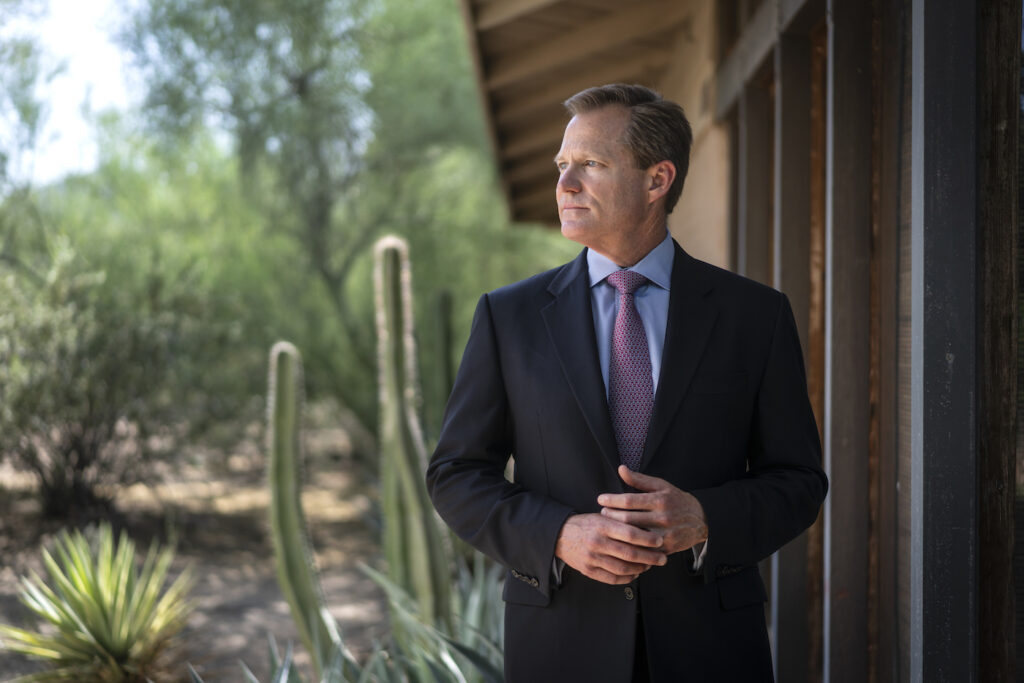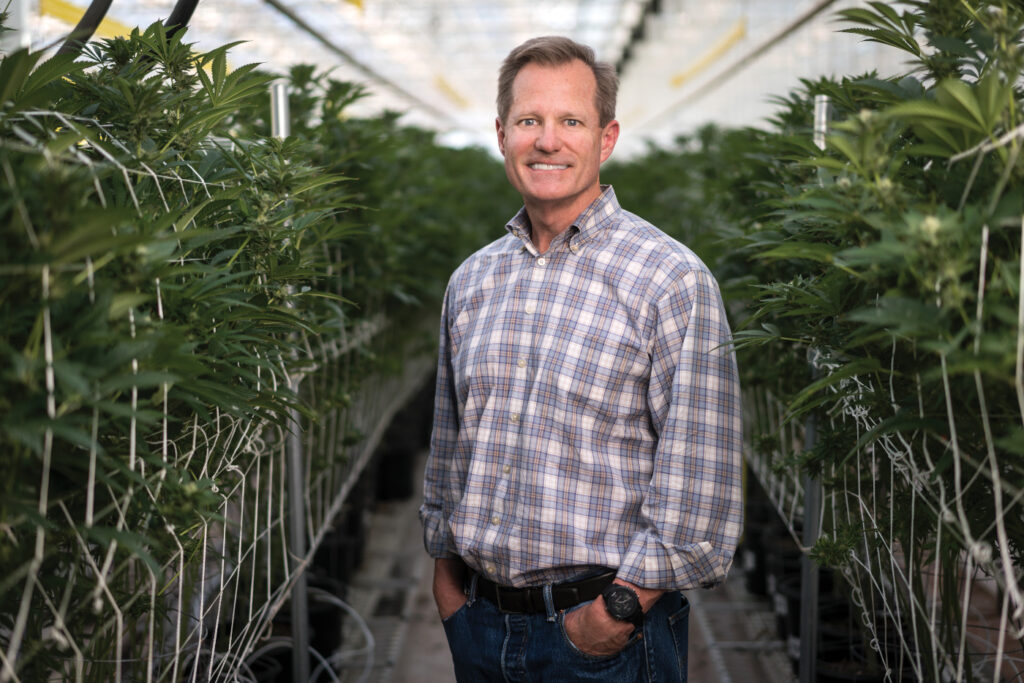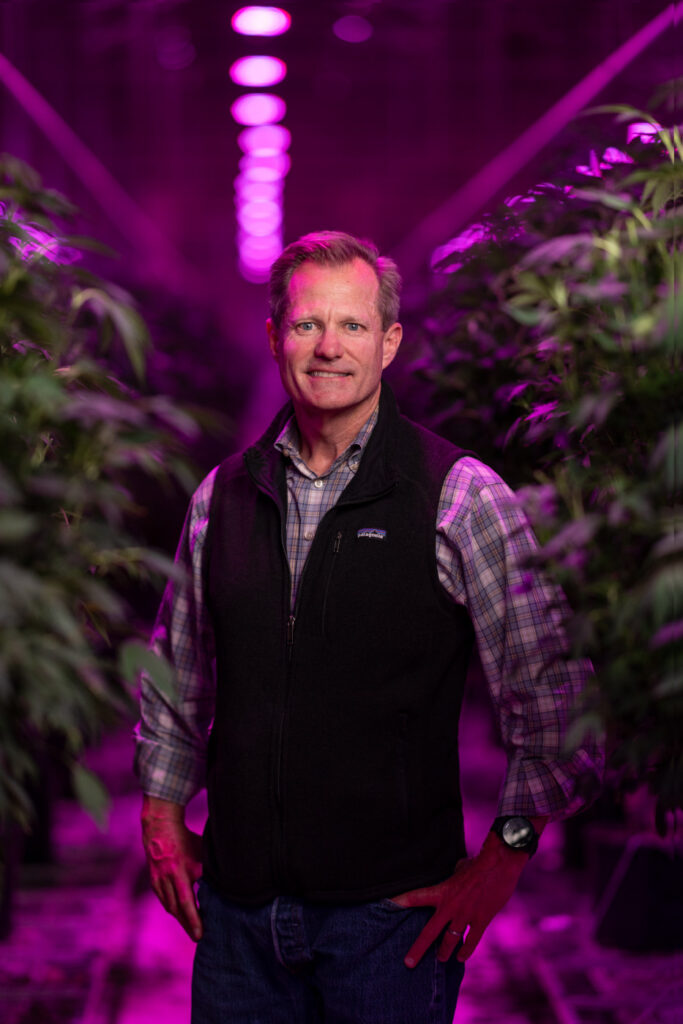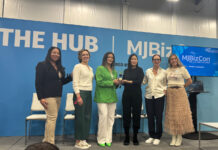The Colorado Plateau, with its Grand Circle of national parks, is one of the most spectacular and diverse geographical regions in the United States. The plateau stretches across the Four Corners region of the Southwest where Utah, New Mexico, Colorado, and Arizona meet. Arizona’s White Mountains are part of the region, which includes high-desert mesas, lakes, and mountains that soar up to 11,421 feet. Skiers, hunters, hikers, and nature lovers visit year-round to recreate in the hot summers and mild winters.
Beyond its appeal to tourists, the area’s semi-arid climate, low precipitation, and high altitude make it among the best places in the country to grow cannabis.
There was just one catch: Snowflake’s population is 80 percent Mormon, and the Church of Jesus Christ of Latter-day Saints (LDS) traditionally has frowned upon weed and all other substances “that are harmful, illegal, or addictive or that impair judgment” (per the General Handbook: Serving in The Church of Jesus Christ of Latter-day Saints).
So why did Symington decide this bastion of conservatism would be a good place to plant one of the largest cannabis farms in the U.S.?

“It was definitely interesting, and very much like a grassroots political campaign,” he said. Symington knows politics. His father, J. Fife Symington III, served as Arizona’s Republican governor from 1991–97. “You had this forty-acre, high-tech greenhouse, and that’s the first thing you pass by as you drive into town. And looking over it on the high knoll is the Mormon temple, so there’s no hiding it. It’s right there in the middle of town.”
Whether because of his innate political skill, affable personality, or a compelling business pitch that promised hundreds of new jobs and significant local tax revenue, Symington eventually won over the government and citizens of Snowflake. In August 2016, a town council decision went his way by one vote, and the city granted a special-use permit to Copperstate Farms. Notably, not until 2018 did the Latter-day Saints Church formally allow its members to use medicinal cannabis, thanks to a deal brokered between Utah’s lawmakers, law-enforcement agencies, medical organizations, and LDS representatives.
Copperstate Farms now produces about 120,000 dry pounds of cannabis every year under 1.7 million square feet of canopy. The facility is one of the largest cannabis greenhouse operations in North America. The company also owns and operates nine medical and recreational dispensaries under the Sol Flower brand and is the largest wholesaler in Arizona. Including its dispensary staff, Copperstate Farms employs about 500 people in the Grand Canyon State. Symington said he never envisioned becoming a retail operator, but the state’s licensing and regulations offer numerous incentives for vertical integration.
“I realized I needed to build up a dispensary chain to where I had a fixed baseline demand for my products so I could run the greenhouses efficiently,” he said. “And then anything I produced above that, I could wholesale or not wholesale, but I didn’t need to produce more than that baseline demand because I was achieving economies of scale.”
Symington’s entry into the U.S. cultivation business was an extension of his life’s work up to that point. While a student at Harvard in the early 1990s, he took a scuba diving trip to Honduras and ended up on a tour of one of the world’s largest banana plantations, where he became fascinated by the operation of a large-scale agribusiness. After graduation, Symington and a college buddy teamed up to build several greenhouses designed for vegetable production in Sinaloa, Mexico. Following the success of this first operation, he established even larger farms in other parts of Mexico. Before long, the rapidly growing company became one of the biggest vegetable producers in the country. Now, after selling off his stakes in the vegetable business, he is squarely focused on Arizona cannabis.
“I spent twenty years flying back and forth to Mexico, spending a week every month down there, so I am very happy right here in Arizona,” he said. “It’s just been great having everything close by. My farm is a two-and-a-half-hour drive away, and all my customers live within an hour. I don’t have to go anywhere. I love this state, and it’s a big market, so I’m content.”
Whether or not he remains content with a single-state operation when federal legalization happens is another question. Large-scale greenhouse operators like Copperstate Farms could become major national players when interstate commerce is allowed and cannabis becomes a true commodity crop that is produced on highly efficient, industrial-scale farms and then distributed by wholesalers to every corner of the country.

How did you convince Snowflake that allowing a large-scale cannabis operation would be good for the town?
I had to strike a good balance by emphasizing the economic advantages of putting [the NatureSweet] farm back into production, what it would do in terms of job creation, and all of the knock-on benefits for the community. When NatureSweet pulled, it was a huge blow in that all those jobs went away. And then you also had a forty-acre glass building that needed constant maintenance and wasn’t getting constant maintenance anymore. It would very quickly deteriorate, and you’d end up with a real eyesore for the whole town.
There were definitely people who were opposed to cannabis, in general, and they looked at this zoning process as a chance to almost relitigate the Medical Marijuana Act. But that wasn’t what [the process] was actually about. It was just interpreting the town’s own code to be able to convert this property into a cannabis operation. So I would go and talk to and meet with anybody who would listen to me—business leaders, work groups, church groups—and explain to them that this was just another farming operation. I wasn’t going to have a dispensary in Snowflake, and I just wanted to use these greenhouses and employ several hundred local residents. Over time, I was able to get my message across. It took two architectural review committee meetings and three town council votes, but ultimately it was successful.
You had no experience in cannabis cultivation when you launched the Snowflake operation, and you’ve said you didn’t bring in consultants to evaluate the environment. Wasn’t that kind of a gamble?
I’ve been farming my whole life, and that is gambling. I started my first greenhouse operation in 1995, and I was a real firm believer in being the future of farming. When it came to vegetable production, I was used to taking the plunge. I was the first one to develop large-scale greenhouses in Mexico, and as I started looking into cannabis production, I visited some of these warehouse grows in both the U.S. and Canada and saw the artificial light and air conditioning and dehumidification equipment, and I knew there had to be a better way to farm but nobody was really doing it yet. So I never really questioned whether or not I’d be able to grow cannabis in Snowflake, because a greenhouse was ideally suited at that elevation to give you the warm days and cool nights, and it got an incredible amount of sunlight, producing an ideal growing environment for just about any product. As you go higher in elevation, it gets dramatically cooler at night, and it is much, much more efficient to heat greenhouses than it is to cool them.
What are some of the hardest lessons you learned after your first year or so of operation, and how did you make corrections going forward?
I need to be perfectly honest. At the beginning, Copperstate Farms produced a tremendous amount of very low-cost, poor-quality cannabis. I came at it like a vegetable farmer, and I was able to get my costs really low, but the end product just wasn’t the quality the market demanded.
I would say it took pretty much six years to dial in the processes, constantly refine and refine, and figure out how to economically grow quality cannabis in a greenhouse. And that has been my hardest challenge. I’d say we cracked the code about a year and a half ago. Our quality now is comparable to warehouse[-grown], but I don’t think we’re ever going to be in the top 10 percent on the shelf. We’re easily at 80 percent from the bottom, and that’s 80 percent of the volume of cannabis people are buying. So, I’m really proud of that. My biggest challenge now is letting Arizona know Copperstate Farms now produces really good, quality product, because out of the gate that was not the case.
In Arizona, wholesale flower prices dropped 36 percent between 2022 and 2023, largely due to a glut of product on the market. How have you adjusted your operations to deal with oversupply?
In the summer of 2022, there was an incredible amount of new warehouse production that came online, because everybody raised money in 2021. Arizona had fairly high prices at the time. It seemed like we were one of the main destinations for dollars to be invested in production, so you had all these people with new capacity, and it all came online in the middle of the summer in 2022. And prices collapsed. It has taken a while to work our way through that collapse, but in [the fourth quarter] of 2023, prices started moving back up. I would say most of the large-scale producers were focused only on wholesale, and a lot of the mid-sized producers have had to close up shop. So, a lot of that excess capacity has basically been taken offline.

You grew up in a politically conservative family. How did your parents react when you told them you were starting a cannabis farm?
It was pretty interesting. I went to both of my parents and was effectively asking for permission. It was pretty odd, like I was four or five years old. I just had to do it. I started with my dad, and he was great about it. I said, “I want to do what I did with tomatoes but now with cannabis, which is legal in Arizona, and I feel like I’ve been training for this for the past fifteen years and the stars have aligned.” He was incredibly supportive and said, “It’s just another kind of farming.”
My father had a reputation as a conservative Republican, but he’s been very libertarian as well. He believes people ought to be able to do what they want to do as long as it doesn’t harm others, and he also is a firm believer in respecting the will of the people. He was completely on board, which was refreshing, and it made me very happy to know I had his support.
Now, my parents got divorced when I was very young, and my mother remarried to a Marine Corps drill sergeant, and I was really more worried about them. Again, surprisingly, in that conversation they were completely fine with it. They asked me, “Is it true they make creams that can help with our joints?” I realized at that moment that if we were at the point where my mother and stepfather were asking about THC cream for their joints, the world really had changed.
What type of CEO are you? What are your guiding principles, and how do you like to lead?
I am very much a strategic, visionary type. I like to come up with a broad plan about where the company is going to go and how we’re going to get there. I also like to motivate and empower all the people who work with me to help execute on that plan. I like to give people a general direction and a lot of leeway and allow them to innovate and achieve the goals we’ve mutually decided upon.
Copperstate Farms produces about 120,000 dry pounds of cannabis every year under 1.7 million square feet of canopy. The facility is one of the largest cannabis greenhouse operations in North America.
Quite a few more East Coast cultivation operations will come online over the next few years. What advice do you have for companies that are considering ramping up to large-scale production? What do you think are the key elements for success?
I am bearish on warehouse production in general, and I think if you’re going to invest money in that type of production, you have to look at it with a really short timeline. How much are you going to put in, and how quickly is that investment going to repay itself? If you are in areas where greenhouses aren’t efficient and the product has to come from warehouses, if there’s a way to focus on retail and buy from the people that are starting up warehouses, that’s where I would spend my money.
I mean, there’s certain regions of the country where greenhouses do really, really well. High elevations where you’ve got super-dry air and lots of sunlight are great for greenhouses. Areas that are really hot and have high temperatures at night and have a ton of humidity are awful for greenhouses. You’re giving up all the benefits of what a greenhouse brings you. So you have to take a look at it on a state-by-state basis and the dynamic that has been created by the regulatory structure. Then you figure out where to go from there. By and large, most of these places on the East Coast really should focus on the retail side of the business. There may be really high wholesale prices today, but they won’t last forever.
We are about a decade into adult use in the U.S. As you’ve watched the industry grow across the country, has anything surprised you about how things developed and evolved?
I find it fascinating how each state has plotted its own course. It’s an amazing experiment in self-government. I think there’s going to be great fodder for economists to do studies for decades to come. By creating these different regulatory environments and then not allowing product to cross state lines, you have a case study on a state-by-state basis of the effects that certain rules and regulations have on an industry. I think it’s been neat watching how that has changed and whether the regulatory environment favors production or retail or pricing. If you look at what happened after Prohibition, that’s a fascinating comparison and could be telling about the things that could be in store for cannabis. There’s the jockeying that went on between the different states and then the way distribution was set up. It’s going to be interesting to watch.
Have you evaluated any potential mergers or acquisitions in Arizona or elsewhere?
We are always looking, but the pricing just hasn’t made sense for a while. There was a huge run-up in the value of licenses, and then they sort of peaked at the same time all the [multistate operator] stock prices came down. Everything’s been sort of at a standstill for a couple of years now; there haven’t really been many transactions. I look all the time, but there still seems to be a disconnect between what people want for their dispensary and the earning potential of their dispensary. That has to rationalize. But I think once we see rescheduling, or we see the SAFE Banking Act passed, there will be a flood of capital into the public companies, and that will unleash the next wave of [merger and acquisition] activity.
With your political connections, what sorts of things are you hearing these days about what legislation might pass this year or next?
I have the same information everybody else does. We’re all sitting around waiting for the DEA to finish the rescheduling process. I was really optimistic everything would be finished soon, but now it looks like they’re going to go through a full comment-and-review period. I have no idea how far back that pushes the timeline, but I was expecting something to happen before the election. And then it seems like the SAFE Banking Act gets closer and closer every time.
It’s also interesting in Arizona, I think, from a governance standpoint. The marijuana industry paid $123 million in taxes this year [Arizona collected $173M in excise tax revenue from cannabis sales in 2023. —Ed.], which was more than beer and alcohol paid in taxes to the state of Arizona. So Arizona truly is starting to receive the benefits everybody thought it would by legalizing and regulating and taxing cannabis production.










